Private Tour by Mercedes Benz
Tour Itinerary
2004
Western Market / Sheung Wan. (Depart hotel at 0930 a.m.)
Western Market houses a variety of merchandise, from imported “ peasant art ” to vintage European watches. Sheung Wan nearby Queen’s Road West there are shops selling brilliant wedding fabrics for the traditional red “Kwa” or wedding costume. Other shops sell paper reproductions of wealth, such as money, house, mahjong, automobile even mobile phones, which are burned by mourners to accompany the spirit of the deceased. Des Voeux Road West’s attractions are equally colourful. Here you can find dried seafood shops stocking preserved oysters, squid, pressd ducks and multitude of herbs and dried fruits.
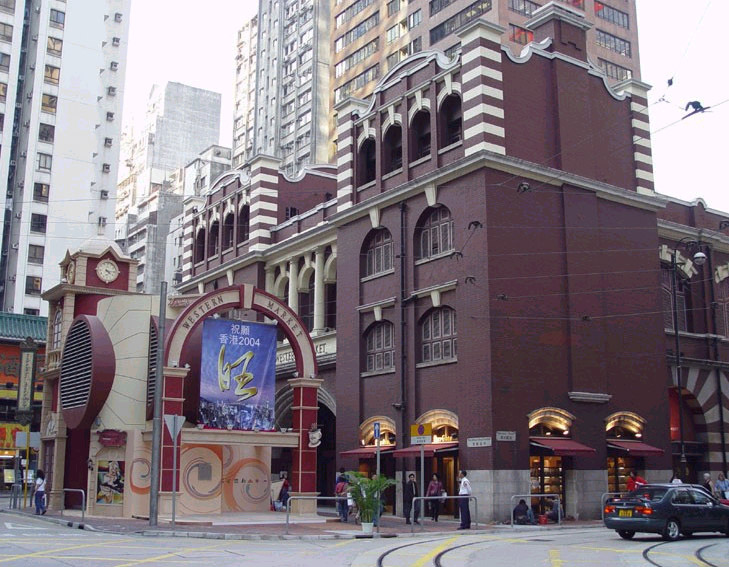
Hollywood
Road / Cat Street / Man Mo Temple.
Hollywood Road is famous for its many antique and curio shops selling silk carpets, Neolithic pots, beautiful Chinese furniture, Ming Dynasty ceramic horsemen and kitsch Maoist memorabilia. Cat Street in reference to Chinese slang for sellers of odds and ends. It’s filled with shops and stalls selling antiques and Bric-a-brac.
Man Mo temple, constructed over a century ago, this temple was one of the most important ones in Hong Kong history. It was well recognized in the community and traditional etiquette. The temple was built in honour of god of literacy Mun Cheong ( Man ) and the martial god of Kwan Kung ( Mo ). In spite of its old age, Man Mo temple is still in good shape and its original appearance still remains.
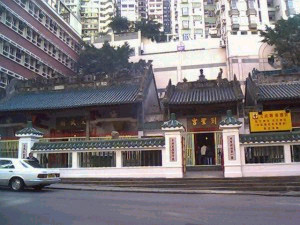
Peak
Tram / Victoria Peak.
The best way to get up to the top is via Peak Tram, a funicular railway which carves a steep 373-metre-high swathe up the lush mountainside. The tram has been operation since 1888, and once compete with sedan chairs as the most popular way up. On the clear day, you can experience the dazzling panorama of Hong Kong Island, the harbour, Kowloon and the hills beyond. Thrilling indoor entertainment is housed in the Peak Tower and Peak Galleria. Attraction include a hi-tech virtual-reality ride, the Peak Explorer, as well as showcase of weird and wonderful artifacts at the “Ripley’s Believe It Or Not” Odditorium. Then, rub shoulders with the famous at famous at world-renowned Madame Tussaud’s wax portraits museum. With around 100 astoundingly life-like wax figures means getting up close and personal with Jackie Chan and Arnold Schwarzenegger has never been easier.

Aberdeen Fishing Village. ( Depart hotel at 0930 a.m. )
Aberdeen was named after the Secretary of State for the Colonies Earl of Aberdeen at 1848. To the Chinese, Aberdeen is still called Heung Keung Tsai ( Little Hong Kong ). This naturally ideal typhoon anchorage is home to few thousands of boat people and consists of two main tribes: the Tanka ( literally the egg people, because they used to pay taxes in eggs rather than cash ) and the Hoklo. Visitors are still seduced by the colourful 30 minutes sampan ride through Aberdeen Harbour to enjoy the chaotic atmosphere, the incredible collection of sea life and the dynamism of city upon the water.
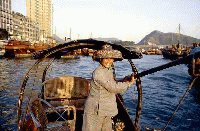
Repulse
Bay Beach.
The beach here is one of Hong Kong’s most picturesque. The Life Guard Club built in traditional Chinese style, features statues of Kwan Yum and Tin Hau both protectors of fishermen. Colonial-style Repulse Bay Arcade, resembling the original luxury hotel that occupied the site, houses, shops and restaurants.

Stanley
Village and Market.
Stanley Bay was Hong Kong’s biggest village in 1841. A haven for fishermen and smugglers. Today, Stanley is largely residential but still retains a quaint, seaside atmosphere.
Stanley market is one of Hong Kong’s best-loved attractions. In its traffic-free lanes, cottages and shophouses have been converted into well-stocked boutiques selling a wide range of inexpensive clothing, including factory overruns of designer items. Porcelain, rattan ware and other hand-crafted items are also available at competitive prices.
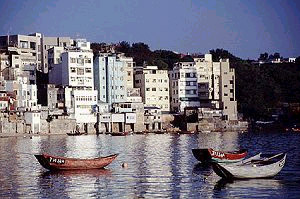
Jade Market / Yaumatei Market. ( Depart hotel at 0945 a.m. )
Jade market has hundreds of stalls selling jade ornaments. If you plan to visit the market, opt for a morning trip and avoid the afternoon crown. Jade dealers offer jade in every sculptable form-from large blocks of raw material, ornately-caved chips. Some jade pieces here are priceless, others are almost worthless. Most of its customers are Chinese, so you know it’s not a typical tourist trap. A short walk away lies the spot where the famous Yaumatei Market, an incredible concentration of outdoor and indoor stalls selling fresh vegetable, seafood and chickens.
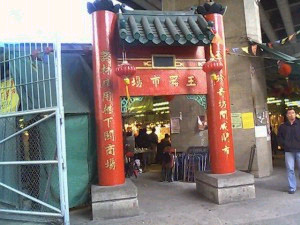
Flower
Market / Bird Garden.
The city’s most fragrant avenue is Flower market Road. Blooms from around the world line the stalls and are priced at almost a third of city flower shops.
Bird Garden, this tiny garden is specially built to house the bird shops in the shabby “ Bird Street ” which is now being demolished. Despite of its size, it has all the elements that traditional Chinese garden have to have. Bird stalls showcasing a variety of melodious songbirds, this garden with its courtyards and moongates, is a delight.
Songbirds remain a favourite pet of some local men.
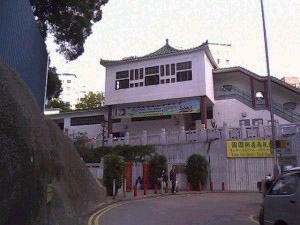
Chi
Lin Nunnery.
Spanning an area of 30,000 square metres, this Buddhist nunnery boasts spectacular “ Tang-style ” architecture in a balanced seven-hall layout. The auspiciously positioned building is constructed in the traditional fashion and is a fine example of ancient Chinese architectural artistic skills.
Wong Tai Sin Temple. ( Depart hotel at 0945 a.m. )
Wong Tai Sin’s bright yellow roofing tiles, which were brought from Kwantung Province across the border. The temple’s stonework was likewise imported from the same Chinese quarries that have supplied temple builder in China during to Hong Kong by a family in 1915. It was a painting they had worshipped in a temple in China called “ Sik Sik Yuen ”. It was first place in a small temple in Wanchai, but was later moved to this new Kowloon site. Backed by the powerful Lion Rock Mountain and looking out over the sea, geomancers agreed that this new site had favourable “ Fung Shui ”.
As you approach Wong Tai Sin you may hear the shaking of a “ Chim ”, a wooden cup full of prayer sticks. The “ Chim ” is shaken until a stick falls out. The number to the stick is then carefully noted, and later, the worshipper will have this stick-fortune interpreted by a seer at one of the rental stall.
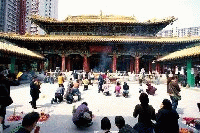
Sam Tung Uk Museum. ( Closed on Tuesday, Christmas day and New Year day )
The Sam Tung Uk Museum in Tsuen Wan is a historical “ Hakka ” walled village built by Chan clan in 1786. The symmetrical layout of the village resembles a checker-board, with an entrance hall, an assembly hall and an ancestral hall along the central axis, and four free-standing houses to either side. The village is completely walled by rows of houses at the two sides and along the rear. By virtue of its great age and unique architectural style. Sam Tung Uk is an exemplar of New Territories walled villages.
Yuen
Yuen Institute.
Dedicated to Hong Kong’s main religions, Buddhism, Taoism and Confucianism, this large temple complex includes a replica of magnificent “ Temple of Heaven ” structure in Beijing. The institute also serves vegetarian food.
Sai Kung Village. ( Depart hotel at 1000 a.m. )
Sai Kung Village has become much less secluded, and the population has seen a shift towards a larger expat community, but this village still holds a great deal of rural charm. A walk through the town provides a look at some traditional Chines shop ( as well as an increasing number of less traditional establishments ). The “ Tin Hau Temple ” in Sai Kung has been on its site form more than 700 years, although it has undergone numerous restorations, the most recent in 1994. There are numbers of great places to grab a bite to eat. (A seafood dinner is recommended).
You can choose your own fresh seafood from stalls and decide how you’d like it prepared. (Please ask the price before ordering)
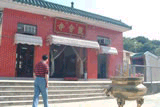
Che
Kung Temple or Ten Thousand Buddhas Monastery.
Che Kung Temple was renovated in late 1993 and located near Tai Wai Village, this temple honours a great Sung Dynasty general who suppressed a revolt in southern China. Che Kung was later deified by the Taoists. Villages believed he drove away an outbreak of the plague.
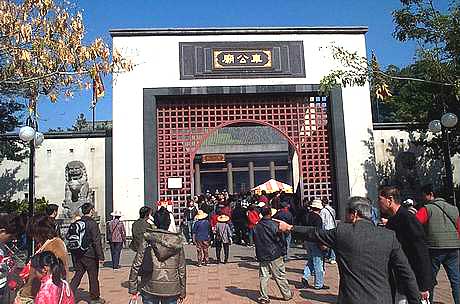
Ten
Thousand Buddhas Monastery.
More than 400 steps lead up a hill to the temple where 12,800 statues of Buddha line the wall, each different from the rest. This monastery was founded by “ Yuet Kai ” who wrote 96 books on Buddhism and whose remains, embalmed in gold leaf, now sit in a glass case. The countryside views are spectacular from the top of the pagoda.
Seafood Dinner. ( Depart hotel at 1900 p.m. )
Lei
Yue Mun or Sai Kung Village.
Lei Yue Mun located at the narrowest point of the harbour, this fishing village is very popular for its seafood and ideal for night out with friends. Here you can choose your own fresh fish and decide how you would like it to prepare. ( Make sure ask the price before ordering). While the village is modernized, there is still an air antiquity that makes it a place well worth visiting.

Temple
Street Night Market or Mong Kong Ladies Market.
Temple Street comes to life a dusk. Traffic stops, people swarm and hundreds of little stalls appear out of no where. This is the famed Temple Street Night Market. Carts bulge with goods, from casual clothing to mobile phone and watches. You may able to buy all your souvenirs here. If you’re lucky, you’ll encounter impromptu Chinese street opera, fortune-tellers, even street dentists. Food stalls abound too, serving up snacks and dishes. If everything looks clean and you’re hungry, then pull up a chair.
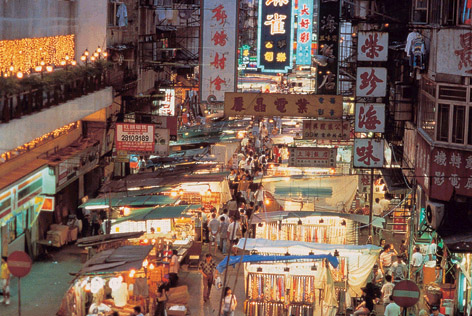
Mong
Kok Ladies Market.
The Ladies Market in Mong Kok used o sell items only for women. That’s not the case anymore, but it is still a place where lots of women shop. The key word here is “ bargain ” since most of the stalls sell inexpensive clothing, lingerie and shoes. Jeans and particularly ubiquitous. Some of the items are locally produced, and many of those are designer knockoffs. This isn’t a bad place to come for small items and souvenirs.
